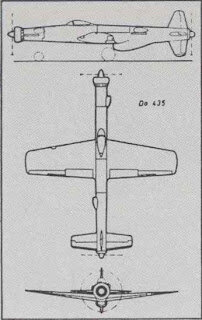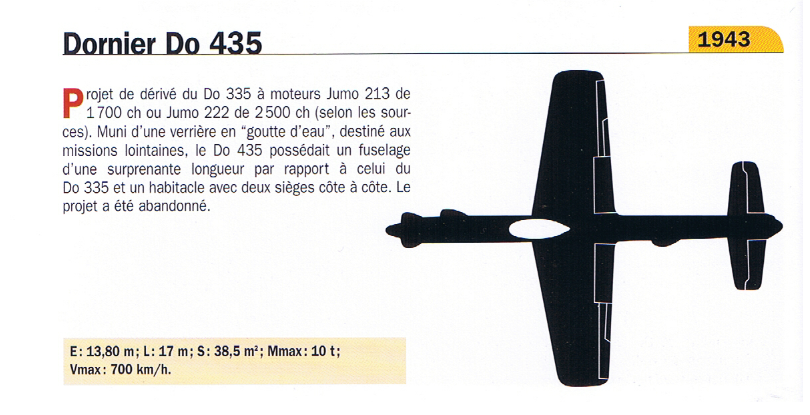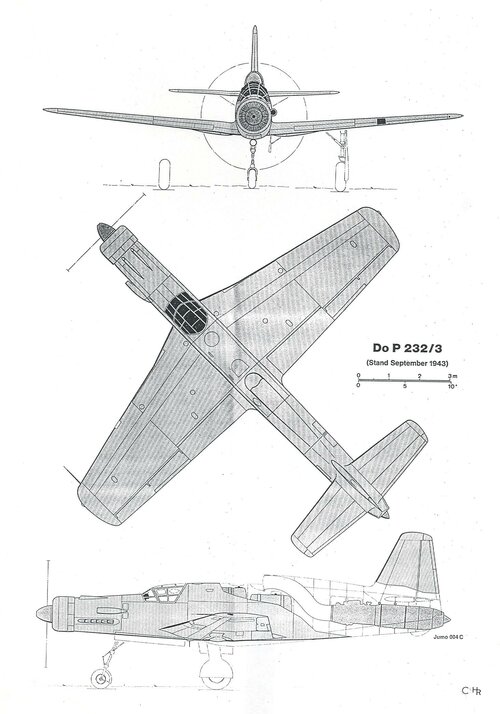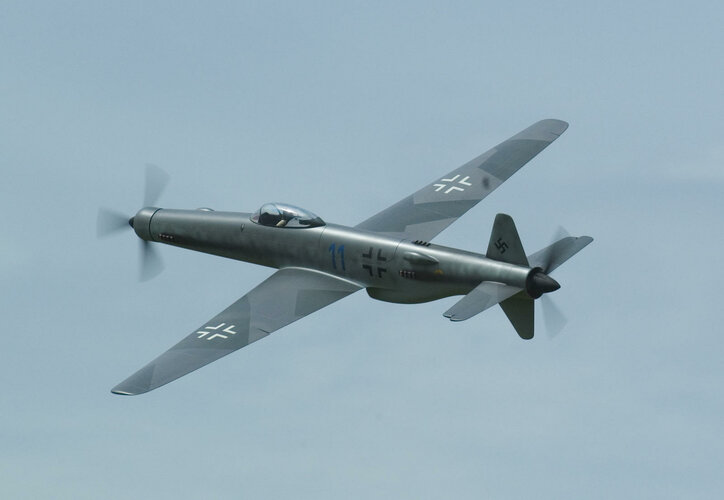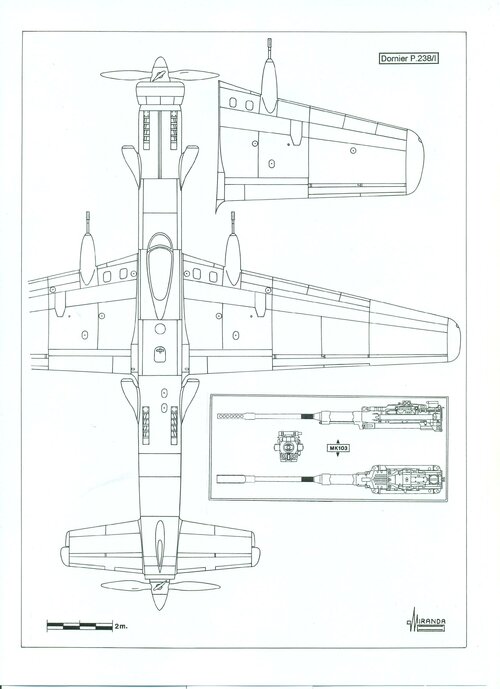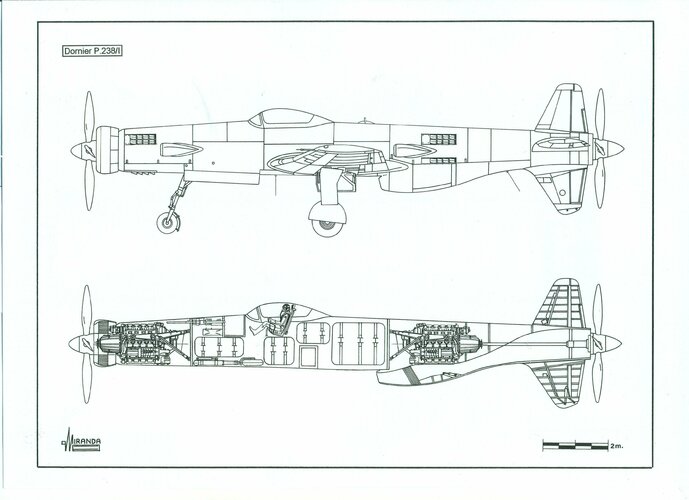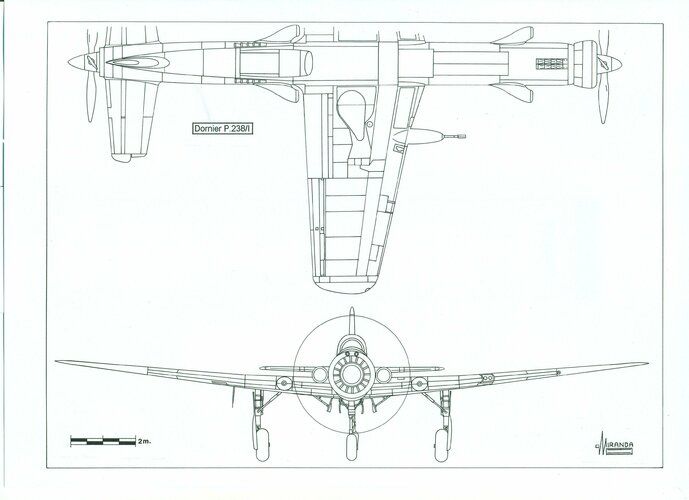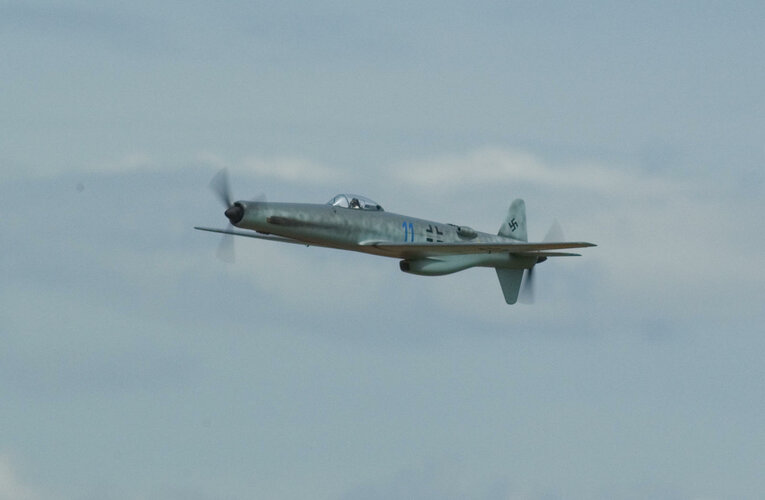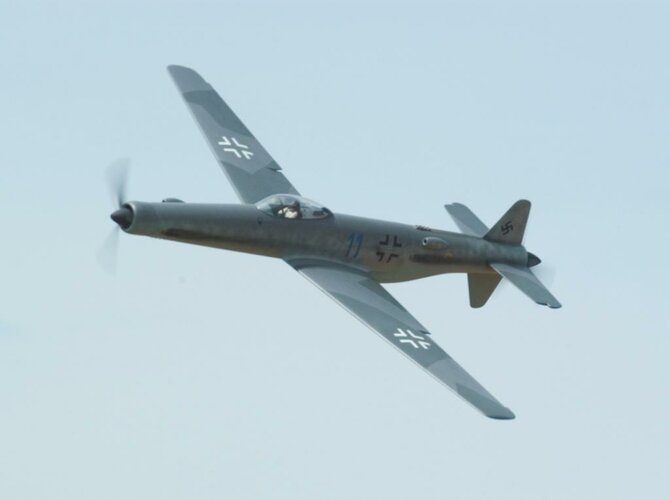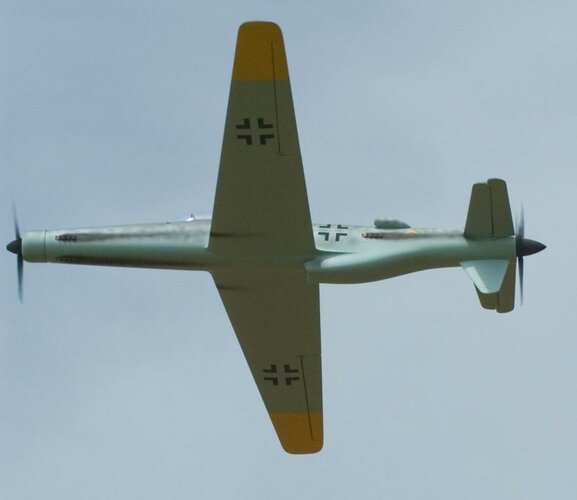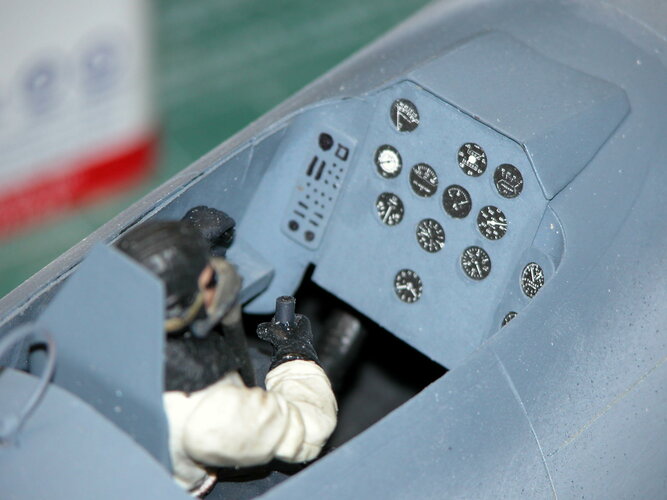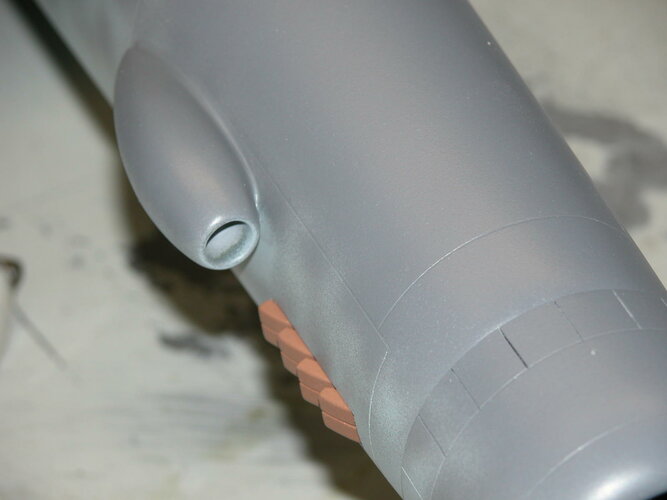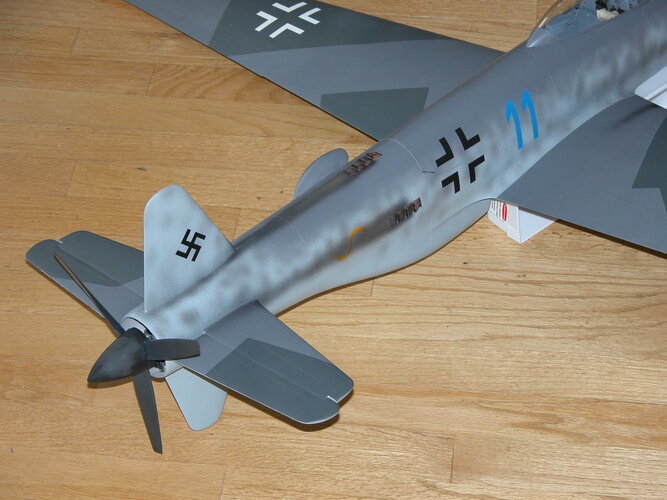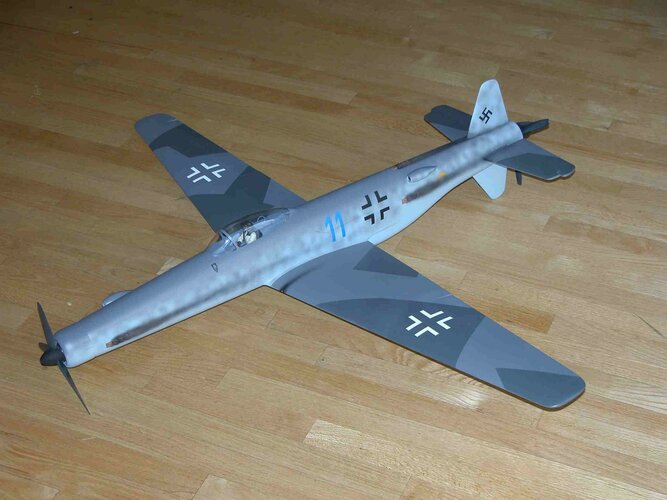Dornier Do-435 model by Ken Stuhr (flyboyken on RC Groups)
Discussion Dornier Do-435 Scale Kit/Scratch Built

www.rcgroups.com
Posting some pics of what would have been an ultimate warbird, the Dornier Do 435. There were many derivative versions of the DO 335 drawn, with none actually built. This derivative was published in an older issue of Flug Revue which I happened to come across at the time. Derivative is almost a misnomer, as this was almost a completely new airplane.
The most common part was the wing, which was basically the wing from the D0 335 but with a stretch to increase span. This planform is shown in William Green’s book Warplanes of the Third Reich, as it was also intended for less advanced derivatives of the 335.
Coupling this wing with the other features of the 435 made good sense though. The longer fuselage carried one pilot but retained the push-pull engine arrangement. Increased length was needed just to house engines and give fuel capacity. And what engines these were! Jumo 222s were just developing at the end of the war. 2500 HP each, minimum, without turbocharging, which this airplane would have incorporated given its mission. So in the power arena, we see roughly double the installed power of the base model 335.
The mission for the type is clear: interceptor. Had the war gone on, B-29s would have approached targets at 25,000 ft at speeds of 330 kts. The Do 435 could have taken the fight to that altitude and much farther West of the “Fatherland” than earlier B-17 intercepts. Considering the installed power and design cleanliness, I think this airplane could have topped 480 MPH at altitude.
For this and many other reasons, good thing the Germans ran out of fuel, men, and ideas about that time. It would have been an awesome airplane.
Now the model:
Span 48”
Flying weight 42 ozs
Wing Section SD6060
Motors 2-Axi 2212/34
Propellers Master Airscrew 9” 3 blade 1 tractor 1 pusher
Battery 2-1200 3s Li-poly in parallel
Max current 9A x 2 = 18A Cruise current ~ 9A
Typ flight time ~ 10 mins
Controls 3ch Ail-Elev-Throttle
This is an all-balsa model. The wing is built up rib and sheet construction, using epoxy glass strengthening, 2 layers of ¾ oz overall. The fuse was strip planked and also glassed. It’s a belly lander and no, the lower fin has never broken off, because it's got up to 10 lams of glass cloth to beef it up.
The paint is Testors plastic model stuff, applied with a Binks airbrush. If you want the specific colors, let me know. Have to look them up. Panel line detail was added to the primer phase using striping tape.
It’s a rather old model, first flying in 2006 I think. Flies great! Its light enough to not have any vices and is very smooth and can be fast. Mostly though, it just looks so different that I really like flying it. Plus there’s no torque effect.

